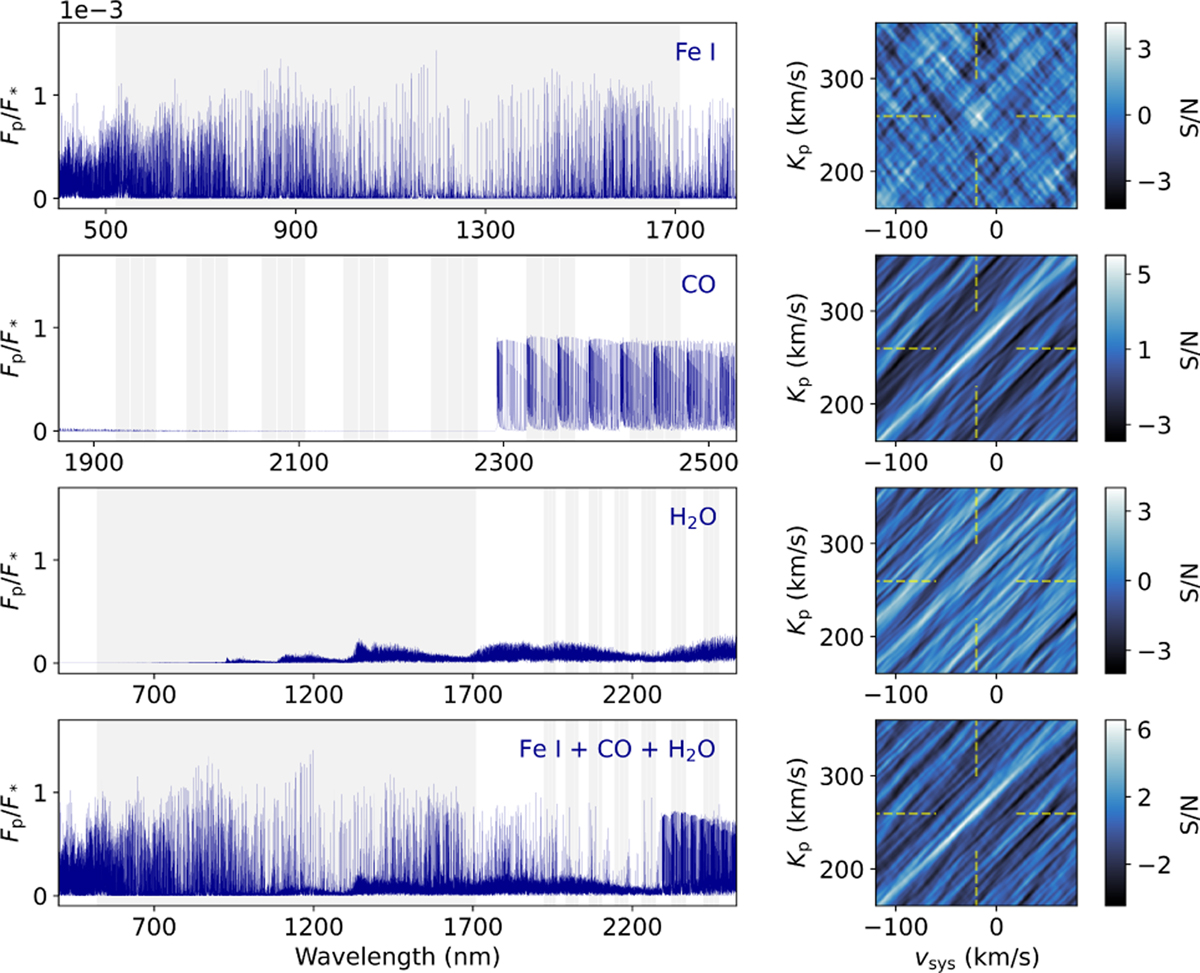Fig. 3

Download original image
Spectral models (left panels) and S/N maps (right panels) of the chemical species investigated in the dayside atmosphere of TOI-2109b. The three top panels show the information for the individual chemical species Fe I, CO, and H2O, the bottom panels show the information for all species combined. We note that the species-combined signal is dominated by the CO detection with CRIRES+. The Fe I spectral signature mainly stems from CARMENES, the CO signal from the CRIRES+ data; the investigated H2O emission lines fall in the wavelength ranges of both instruments. The H2O model spectrum shows particularly weak emission lines due to the predominant thermal dissociation of the species at the elevated temperatures of the TOI-2109b atmosphere. The wavelengths covered by CARMENES and the CRIRES+ K2166 setting used in this work are indicated by the gray shaded area. The expected position of the planetary signal in the S/N maps is indicated by the yellow dashed lines. We show the S/N maps corresponding to the optimal SYSREM iteration number as determined in Sect. 4.3.
Current usage metrics show cumulative count of Article Views (full-text article views including HTML views, PDF and ePub downloads, according to the available data) and Abstracts Views on Vision4Press platform.
Data correspond to usage on the plateform after 2015. The current usage metrics is available 48-96 hours after online publication and is updated daily on week days.
Initial download of the metrics may take a while.


